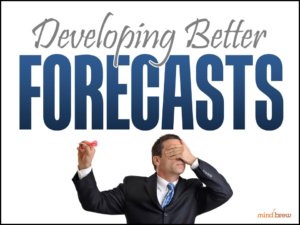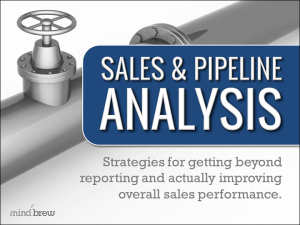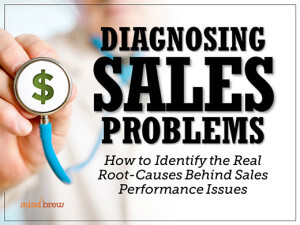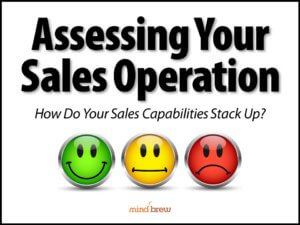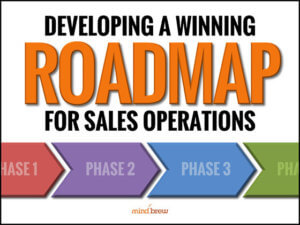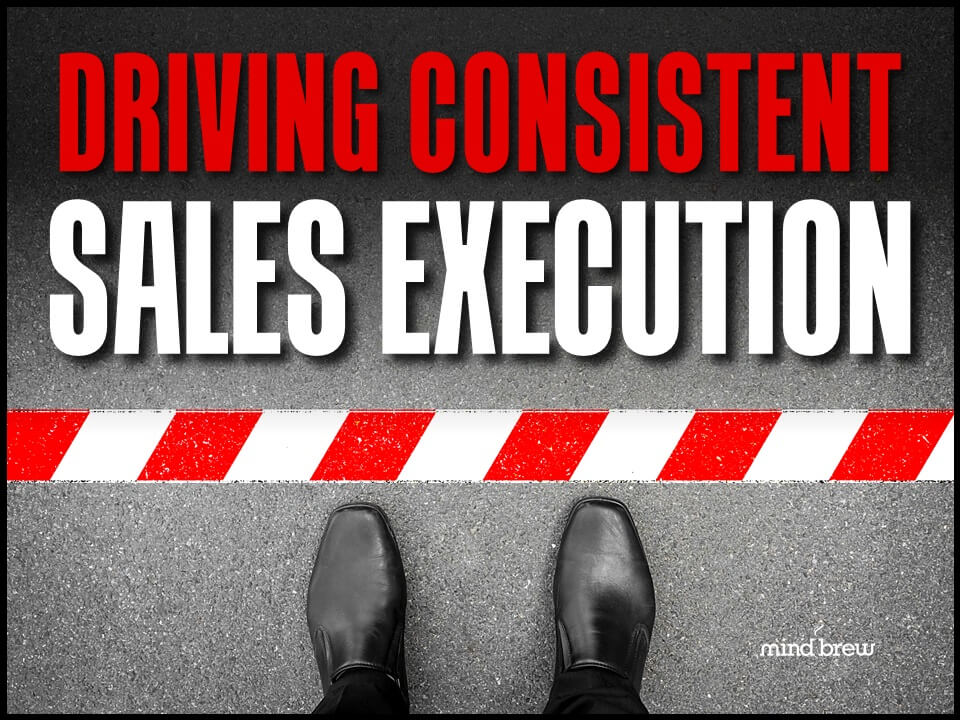For most Sales Operations groups, forecasting is a core responsibility and accurate forecasts are a critical ongoing deliverable. After all, sales forecasts will influence budgets, resource allocations, incentives and rewards, capacity plans, marketing investments, and a whole lot more. So it’s important to get it right.
But unfortunately, to paraphrase Yogi Berra, humans are really bad at making predictions…especially about the future. And in most commercial operations, there are a lot of humans involved in the end-to-end forecasting processes.
As a result, too many groups end up spinning their wheels, producing sales forecasts that are inaccurate, unreliable, and not nearly as useful as they really could or should be.
In the Developing Better Forecasts webinar, we expose and explain what leading sales operations are doing differently to develop more effective and useful forecasts. Spoiler alert! They aren’t just doing one thing differently. Instead, they’re using a combination of different strategies and tactics. In other words, they’ve found a recipe for meaningful improvement, rather than a single ingredient.
That being said, the top strategies and tactics we discuss in the webinar all seem to be designed to address three common problems and underlying deficiencies inherent to the standard or typical approaches to sales forecasting:
1. Weak Foundation and Predictive Basis
Many sales forecasts are based primarily on the subjective opinions of the sales reps themselves. As a result, these forecasts tend to be overly optimistic and often represent a loose mixture of goals, aspirations, and realities on the ground.
Other forecasts are nothing more than the last period’s performance levels, with an adder or multiplier applied. Of course, these types of forecasts should be called goals or targets, as they make no attempt to reflect actual market conditions.
In sharp contrast, leading sales operations are taking steps to augment, juxtapose, or triangulate the sales reps’ perspectives with more objective, data-driven views.
In some cases, they’re using statistical models to more accurately predict how any given mix of early-stage opportunities will ultimately resolve. In other cases, they’re relying on manual data analysis to develop representative performance benchmarks that can be applied to opportunities as they move through the sales processes.
2. Lack of Responsiveness and Dynamics
It’s not uncommon for sales forecasts to be relatively static compared to the dynamics that actually exist in the marketplace. Typically, there’s so much time and effort involved in pulling together a forecast in the first place that it’s prohibitive or impractical to generate updates or revisions on a more frequent basis.
Leading teams, on the other hand, are striving to enable near-real-time and on-demand forecast updates and revisions.
Leveraging predictive models and/or performance benchmarks, the opportunity pipeline can be automatically analyzed at any point in the period, generating new predictions with respect to deal resolution and financial yield. This then provides management with a much more accurate and timely view as to where they are at, relative to where they need to be.
3. Ineffective Diagnosis and Guidance
Many groups will simply pull together a current forecast update, hand it over to the interested parties, and consider their work to be done. The recipients of the forecast update are then left to their own devices to figure out what’s going on, why it’s happening, and what should be done about it. And since not everyone is well-versed in the data and proficient in analysis and diagnosis, this can’t help but lead to inaccurate conclusions and ineffective corrective actions.
Leading teams are going the extra mile to not only deliver the forecast data, but also provide analysis, diagnosis, and next-steps recommendations.
These teams are leveraging their deep knowledge of the underlying data to help management better understand what’s really going on. They’re using their diagnostic skills to determine why things are happening…or not happening…and what could be done about it. And these teams are not only looking at the current period, they’re helping management see what the current trends portend for future periods as well.
If any of these problems or deficiencies resonate or seem to describe aspects of your forecasting efforts, be sure to check out the Developing Better Forecasts webinar for more detailed explanations of the strategies and tactics leading operations are using. Out of all the ingredients we cover in that session, you’re sure to find a recipe that will work for you.

